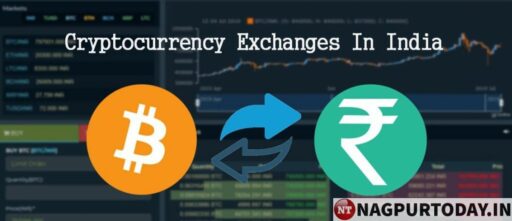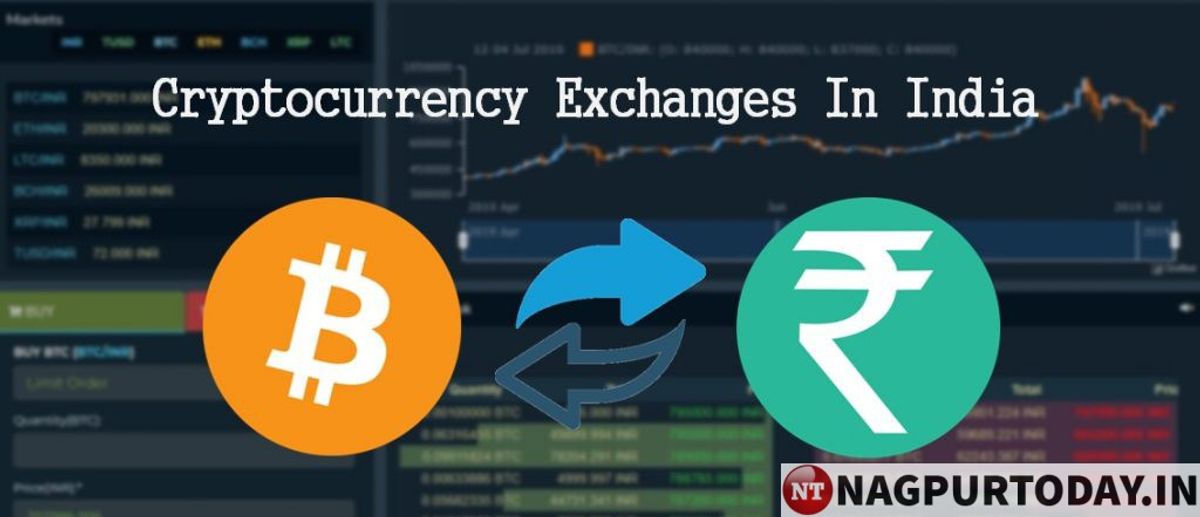In the dynamic world of cryptocurrency trading, selecting the right exchange is crucial for both security and success. The year 2023 has seen a plethora of platforms vying for the attention of traders, each with unique features and security measures. This article provides a comprehensive guide to the top crypto currency exchanges of 2023, evaluating their security, user experience, fee structures, and overall reliability. Whether you’re a seasoned trader or a beginner, our insights will help you navigate the crypto exchange landscape and trade safely.
Key Takeaways
- Security remains a paramount concern in 2023, with exchanges bolstering measures to protect users’ assets from hacks and theft.
- Binance, Bybit, Kraken, and Gemini are among the top exchanges, each excelling in different aspects such as transaction speed, transparency, and security.
- For beginners, ease of use, educational resources, and customer support are essential features to consider when choosing an exchange.
- Fee structures vary widely across platforms; traders should understand the true cost of trading, including any hidden fees.
- Looking forward, exchanges are likely to continue innovating, with a focus on enhancing security, user experience, and cost-efficiency.
Evaluating the Security of Top Crypto Exchanges

Understanding Exchange Security Measures
In the dynamic world of cryptocurrency, the security of exchanges is paramount. Understanding the various security measures implemented by exchanges can help users make informed decisions. Key security protocols include two-factor authentication, cold storage of assets, and regular third-party security audits. These measures are designed to protect against unauthorized access and potential cyber threats.
- Two-factor authentication (2FA) enhances account security beyond just a password.
- Cold storage refers to keeping a reserve of cryptocurrencies offline, away from potential online vulnerabilities.
- Insurance coverage offers financial protection in the event of a security breach.
- Regular security audits by third parties provide transparency and trust in the exchange’s security infrastructure.
The goal is to create a secure trading environment that minimizes risks and safeguards user assets. Exchanges that prioritize security features are often more trusted by the community.
It’s also important to recognize that users have a role to play in maintaining security. Vigilance against phishing attacks and the use of strong, unique passwords are essential personal security practices.
The Impact of Past Hacks on Current Practices
The history of cryptocurrency exchanges is marred by numerous high-profile hacks, leading to the loss of millions of dollars in user funds. These incidents have served as a wake-up call for the industry, prompting a significant overhaul in security measures. Exchanges have realized the importance of not just reimbursing affected users but also preventing such breaches in the first place.
To mitigate these risks, exchanges have adopted a multi-faceted approach to security. This includes storing a majority of assets in cold storage, implementing rigorous access controls, and securing insurance to cover potential losses due to hacks.
The table below highlights some of the security enhancements adopted by exchanges in response to past incidents:
| Security Enhancement | Description |
|---|---|
| Cold Storage | Storing the bulk of digital assets offline to reduce the risk of online theft. |
| Two-Factor Authentication | An additional layer of security requiring a second form of verification. |
| Insurance Policies | Policies taken out to cover losses in the event of a hack. |
These improvements are a testament to the industry’s commitment to safeguarding user assets and maintaining trust. As the market matures, we can expect even more robust security protocols to become standard practice across all reputable crypto exchanges.
Security Features to Look for in 2023
As the crypto market continues to evolve, so do the security measures necessary to protect traders’ assets. In 2023, it’s crucial to select exchanges that not only offer advanced trading features but also prioritize robust security protocols.
- Two-factor authentication (2FA) remains a fundamental layer of security, deterring unauthorized access.
- Cold storage options for funds provide an additional safeguard against online threats.
- Insurance coverage can offer compensation in the event of a security breach.
- Regular third-party security audits are essential to ensure ongoing vigilance and trustworthiness.
The landscape of crypto exchanges in 2023 brings a variety of platforms with unique features. Key players include Crypto.com, Coinbase, and Binance. When making informed trading decisions, focus on security, fees, and regulatory compliance.
Exchanges that have endured past security incidents, such as Binance’s 2019 hack, should demonstrate a clear and improved security framework. Traders should seek out platforms that have not only learned from past vulnerabilities but have also adapted to the latest security challenges.
Comprehensive Reviews of Leading Crypto Exchanges

Binance: A Deep Dive into the Largest Exchange
Binance stands out as a behemoth in the crypto exchange arena, not only due to its vast array of over 350 cryptocurrencies but also for its reputation for low trading fees and high liquidity. Established in 2017, Binance has quickly ascended to the top, attracting both novice and seasoned traders with its comprehensive suite of features.
Binance’s commitment to offering a diverse selection of assets and competitive fees has cemented its position as a market leader.
While the platform’s low fees are a major draw, it’s the liquidity that often seals the deal for traders looking for quick and efficient transactions. Here’s a snapshot of what Binance brings to the table:
- Supported Cryptocurrencies: Over 350
- User Base: Millions worldwide
- Key Selling Point: Lowest trading fees
- Notable Feature: High liquidity
For those considering Binance, it’s important to weigh these strengths against your individual trading needs and preferences. The platform’s scale and offerings make it a formidable choice for anyone looking to enter the crypto trading space.
Bybit: Assessing Transaction Speed and User Experience
Bybit stands out in the realm of crypto exchanges with its impressive transaction speed, boasting over 100 transactions per second (TPS). This performance is a testament to the platform’s commitment to efficiency and responsiveness, catering to traders who value quick execution times.
In terms of user experience, Bybit’s advanced trading tools and contract options, including USDT Perpetual, Inverse Perpetual, and Inverse Futures, provide traders with flexibility and a robust trading environment. The platform’s interface is designed to accommodate both isolated and cross-margin trading, enhancing the trading experience for users of all levels.
Bybit’s dedication to transparency is evident in their efforts to implement a Proof of Reserves solution, ensuring users can trust the platform with their funds.
The fee structure on Bybit is competitive, with a net cost of 0.05% and a maker rebate that encourages liquidity. Here’s a quick breakdown of Bybit’s fees:
| Fee Type | Amount |
|---|---|
| Taker Fee | 0.075% |
| Maker Rebate | -0.025% |
| Withdrawal Fee | Variable |
| Funding Fee | 0.02%/ -0.02% |
Accessibility is key for global users, and while Bybit is available worldwide, it’s important to note the exclusions in countries like the US and Canada (Quebec only), among others.
Kraken: Transparency and Trust in the Spotlight
Kraken has set a high standard for transparency in the cryptocurrency exchange industry. Since 2014, they have been at the forefront of implementing regular asset audits, partnering with Armanino LLP for Proof of Reserve audits. This commitment to transparency is a testament to their dedication to building trust with users.
In terms of security, Kraken is verified by third-party auditors, ensuring a high level of security and compliance. The exchange offers a robust selection of features, including over 100 cryptocurrencies, margin and futures trading, and staking rewards. Its professional dashboard, Kraken Pro, is tailored for advanced traders seeking low fees and provides customizable chart analysis tools, detailed order book insights, and high-speed execution.
Kraken’s approach to security and transparency not only protects its users but also sets an industry benchmark that others strive to meet.
While Kraken prioritizes a secure and transparent trading environment, it’s important for traders to review top-rated exchanges based on their individual needs, considering factors such as security features, fees, and the range of available cryptocurrencies.
Gemini: Why Security is Their Top Selling Point
Gemini has established itself as a fortress in the crypto exchange arena, with a strong emphasis on security as its cornerstone. The exchange, founded by the Winklevoss twins, is renowned for its rigorous security measures, including the majority of users’ funds being safeguarded in offline cold storage, and its commitment to regulatory compliance across various US states.
The platform’s security features extend to mandatory two-factor authentication and the ability for users to manage device access to their accounts. Gemini’s dedication to security is further underscored by its SOC 2 certification, a testament to the robustness of its security and compliance frameworks as verified by third-party auditors.
While Gemini’s fees might be on the higher side, many users find the cost justifiable for the peace of mind that comes with top-tier security.
Here’s a quick glance at Gemini’s key specifications:
| Transaction Fees | Currencies | Minimum Deposit | Trade Limits |
|---|---|---|---|
| 0.0% – 0.40% for active trader, 1.49% for regular transactions | 80+ | Varies | Yes |
In addition to its security credentials, Gemini is also appreciated for its exceptional mobile app and support for a wide range of cryptocurrencies, making it a top choice for those prioritizing the safety of their digital assets.
Navigating the Crypto Exchange Landscape for Beginners

Essential Features for Novice Traders
For those new to the world of digital currencies, the journey begins with selecting a crypto trading platform that is not only secure but also user-friendly. Novice traders should prioritize platforms that offer a straightforward user interface and provide educational resources to help them navigate the complexities of cryptocurrency trading.
Key features to consider include:
- Ease of use: A clean and intuitive interface is vital for beginners to manage their trades without feeling overwhelmed.
- Educational content: Resources such as tutorials, guides, and articles can significantly aid in understanding the market.
- Variety of cryptocurrencies: Access to a diverse range of digital currencies allows for a more comprehensive trading experience.
- Customer support: Prompt and helpful support is essential, especially when encountering issues or needing guidance.
It’s important for beginners to align their choice of platform with their trading goals and the level of support they may require.
While advanced trading features can be enticing, they may not be necessary for those just starting out. A platform that balances simplicity with the necessary tools for effective trading will likely be the best fit for novice traders.
How to Start Trading: A Step-by-Step Guide
Embarking on your journey into the world of cryptocurrency trading can be exhilarating, but it’s crucial to start with a solid foundation. Begin your adventure by selecting a reputable crypto exchange that aligns with your needs. Here’s a simple guide to get you started:
- Research and compare different exchanges, considering factors like security, fees, and available cryptocurrencies.
- Sign up for an account, providing the necessary personal and financial information.
- Verify your identity to comply with regulatory requirements and enhance account security.
- Deposit funds into your account, either through bank transfer, credit card, or other supported methods.
- Familiarize yourself with the platform’s interface and trading tools.
- Start with small trades to gain experience and build confidence.
- Develop a trading strategy that suits your risk tolerance and investment goals.
Remember, the key to successful trading is not just about making profitable trades, but also about managing risks and learning continuously. Take advantage of educational resources and practice with demo accounts if available.
As you progress, keep in mind the importance of staying updated with market trends and regulatory changes. This beginner’s guide is your first step towards navigating the world of crypto exchanges, setting you up for a maximized trading experience with a clear understanding of the essentials.
Choosing the Right Exchange for Your Trading Style
Selecting the appropriate exchange is pivotal for your trading journey. Day trading can be lucrative, but requires a platform that offers real-time data and rapid transaction capabilities. On the other hand, swing trading is more accommodating for those with full-time jobs, emphasizing less frequent, strategic trades over longer periods.
When considering an exchange, balance is key. You’ll want to weigh user-friendliness against the range of features offered. For new investors, the usability of the interface is particularly crucial, as it can greatly affect the learning curve and overall trading experience.
Remember, the right exchange for you should align with your trading goals and provide a secure, efficient, and cost-effective environment for your investments.
Here’s a quick checklist to help you evaluate potential exchanges:
- Security measures and past performance
- Interface ease-of-use and design
- Fee structure and hidden costs
- Range of supported cryptocurrencies
- Liquidity and trading volume
- Customer service and support
By carefully considering these aspects, you can find an exchange that not only meets your trading needs but also becomes a reliable partner in your investment journey.
The Economics of Crypto Exchanges: Fees and Affordability

Comparing Fee Structures Across Platforms
When venturing into the world of cryptocurrency trading, understanding the fee structures of various exchanges is paramount. Cryptocurrency exchanges play a crucial role in the digital currency landscape, with fee structures directly impacting your trading profitability. It’s essential to consider not just the trading fees, but also withdrawal, deposit fees, and any other associated charges.
Exchanges must evolve UX for diverse users, ensuring that the platform’s complexity does not obscure the costs involved.
Here’s a brief comparison of fee structures from some of the leading platforms:
| Exchange | Trading Fees | Withdrawal Fees | Deposit Fees |
|---|---|---|---|
| Gemini | Up to 1.49% | Variable | Free |
| Binance | As low as 0.1% | Variable | Free |
While Gemini’s fee can reach 1.49% for trades over $200, Binance stands out with its low trading fees, starting at just 0.1%. However, it’s important to note that fees can vary depending on the platform used within the exchange and the volume of trade.
Which Platforms Offer the Lowest Fees?
In the quest for the most cost-effective trading, BYDFi sets the standard for low fees among the top crypto exchanges. It employs a "maker-taker" fee model, incentivizing those who add liquidity with reduced fees. Binance is also noteworthy for its competitive trading fees, particularly for users outside the US.
When considering an exchange, it’s crucial to weigh not just the trading fees but also the costs associated with deposits, withdrawals, and any additional services.
Here’s a quick comparison of fee structures:
- BYDFi: Low fees across trading, withdrawals, and deposits.
- Binance: Offers the lowest trading fees, with slight variations for US users.
- Kraken: Ranges from 0.00% to 0.26%, appealing to experienced traders.
- Coinbase: Variable fees, with a more favorable structure for advanced traders.
- Crypto.com: Fees up to 0.075%, complemented by a robust mobile app.
Remember, the lowest fees can vary based on trade types and your balance on the exchange. Always research fee structures, hidden costs, and liquidity to ensure profitable and secure trades.
Understanding the True Cost of Trading
When venturing into the world of crypto trading, it’s crucial to look beyond the surface of advertised fees. Hidden costs can quickly accumulate, impacting the overall profitability of your trades. For instance, while a platform may boast low trading fees, additional charges such as withdrawal and deposit fees can significantly increase the cost of each transaction.
- Trading Fees: Often expressed as a percentage of the trade value, these can vary depending on whether you’re a maker or taker in the transaction.
- Withdrawal Fees: Some exchanges charge a flat fee or a percentage of the withdrawn amount.
- Deposit Fees: Fees for depositing funds can also add up, especially if you’re frequently moving funds into your exchange account.
- Other Charges: Always be aware of other potential fees, such as those for currency conversion or using specific payment methods.
It’s essential to consider the overall fee structure of an exchange, including any discounts for high-volume trading or holding the exchange’s native cryptocurrency.
Remember, the goal is to select an exchange that aligns with your trading habits and financial goals. A comprehensive understanding of all associated costs will ensure that you make informed decisions, keeping in mind the guide to selecting the best crypto exchange: consider fees, user experience, security, liquidity, and innovations. Watch out for hidden costs in swaps for cost-effectiveness.
Final Thoughts on the Best Crypto Exchanges of 2023

Balancing Security, Features, and Costs
In the quest to find the ideal crypto exchange, traders must weigh various factors that contribute to a platform’s overall appeal. Security is paramount, as the digital nature of cryptocurrency makes it a target for cyber threats. Exchanges that prioritize robust security measures, such as two-factor authentication (2FA), cold storage, and insurance, provide a safer environment for users’ assets.
User experience is another critical aspect. A platform’s interface should be intuitive, offering efficient trading tools and resources to accommodate both novice and seasoned traders. Features like advanced charting, a variety of order types, and customization options enhance the trading experience.
Cost is an inevitable consideration. While some traders may prioritize low fees, it’s essential to understand that the cheapest option isn’t always the best. A balance between competitive fees, strong security, and a comprehensive feature set is key to choosing the right exchange.
The best crypto exchanges of 2023 are those that manage to strike a harmonious balance between security protocols, user experience, and cost-effectiveness, without compromising on any front.
Our Top Picks for the Year
After a comprehensive review of security, user experience, and fee structures, we’ve identified the standout crypto exchanges of 2023. Gemini leads the pack with its unwavering commitment to security, making it a top choice for cautious investors. Kraken follows closely, with its transparent operations instilling trust among users.
For those seeking a balance between low fees and high-speed transactions, Bybit emerges as a strong contender. Meanwhile, Binance remains a favorite for its extensive selection and liquidity.
While each platform has its unique strengths, the best exchange for you depends on your individual trading style and priorities.
Our methodology for selection is rigorous, ensuring that only the most reliable and user-friendly platforms make it to our top picks. Here’s a snapshot of how they compare:
| Exchange | Security Rating | User Experience | Fee Structure |
|---|---|---|---|
| Gemini | Excellent | Good | Moderate |
| Kraken | Very Good | Very Good | Low |
| Bybit | Good | Excellent | Low |
| Binance | Good | Excellent | Low |
Future Trends in Crypto Exchange Services
As the crypto industry continues to evolve, we can expect to see a surge in innovative services and features from exchanges. The focus on security will remain paramount, with platforms likely to introduce more advanced measures to safeguard digital assets. This could include enhanced multi-factor authentication, insurance policies, and even AI-driven anomaly detection systems.
- Decentralized finance (DeFi) integration
- Expansion of staking and lending services
- Adoption of regulatory compliance standards
- Increased transparency and user education initiatives
The quest for the ideal crypto exchange is nuanced, requiring a balance of security, features, and costs. Exchanges that can adapt to the changing landscape while maintaining trust will lead the market.
Looking ahead, we anticipate a shift towards more personalized trading experiences, with exchanges offering tailored services to meet the diverse needs of their users. From novice to expert traders, the ability to customize one’s trading dashboard, alerts, and even AI-based trading assistance will become more prevalent. As the market matures, the economics of crypto exchanges will also evolve, potentially leading to more competitive fee structures and innovative revenue models.
Conclusion
As we’ve explored the top cryptocurrency exchanges of 2023, it’s clear that safety, fees, and user experience remain paramount for traders and investors. While platforms like Binance, Bybit, and Kraken have set high standards in the industry, newcomers such as OKX are also making their mark. The importance of robust security measures cannot be overstated, especially in light of past incidents like the FTX collapse. It’s crucial for users to consider not only the security features of an exchange but also the reputation and track record of the platform. For those seeking the utmost security, self-custody with a hardware wallet is recommended. Ultimately, the best exchange for you will depend on your individual needs, whether you’re a seasoned trader or just starting out. Remember to stay informed, prioritize security, and choose a platform that aligns with your trading goals and values.
Frequently Asked Questions
What is the safest crypto exchange?
The safety of a crypto exchange is determined by its security measures, reputation, and track record. Exchanges like Coinbase, Gemini, and Bitstamp are generally considered safe due to robust security features such as multi-signature technology and cold storage.
Why are certain cryptocurrency exchanges unavailable in the United States?
Some crypto exchanges are unavailable in the U.S. due to regulatory requirements and compliance with local financial laws. Exchanges must adhere to strict rules regarding customer protection and anti-money laundering, which can limit their availability.
Which crypto platform has the lowest fees?
Fee structures vary by exchange. Some platforms offer lower fees for high-volume traders or through the use of their native tokens. It’s essential to compare fee structures to find the most affordable option for your trading habits.
What is the best crypto exchange for beginners?
The best exchange for beginners is one that offers a user-friendly interface, educational resources, and good customer support. Platforms like Coinbase and Gemini are often recommended for new users due to their ease of use and strong security measures.
How to select a crypto exchange in the United States?
When selecting a crypto exchange in the U.S., consider factors such as security features, fee structure, available cryptocurrencies, user experience, and compliance with U.S. regulations. It’s also advisable to research the exchange’s reputation and customer service quality.
What are the key security features to look for in a crypto exchange?
Key security features include two-factor authentication (2FA), cold storage for the majority of funds, insurance policies to protect against theft or hacking, real-time monitoring systems, and compliance with industry security standards.





